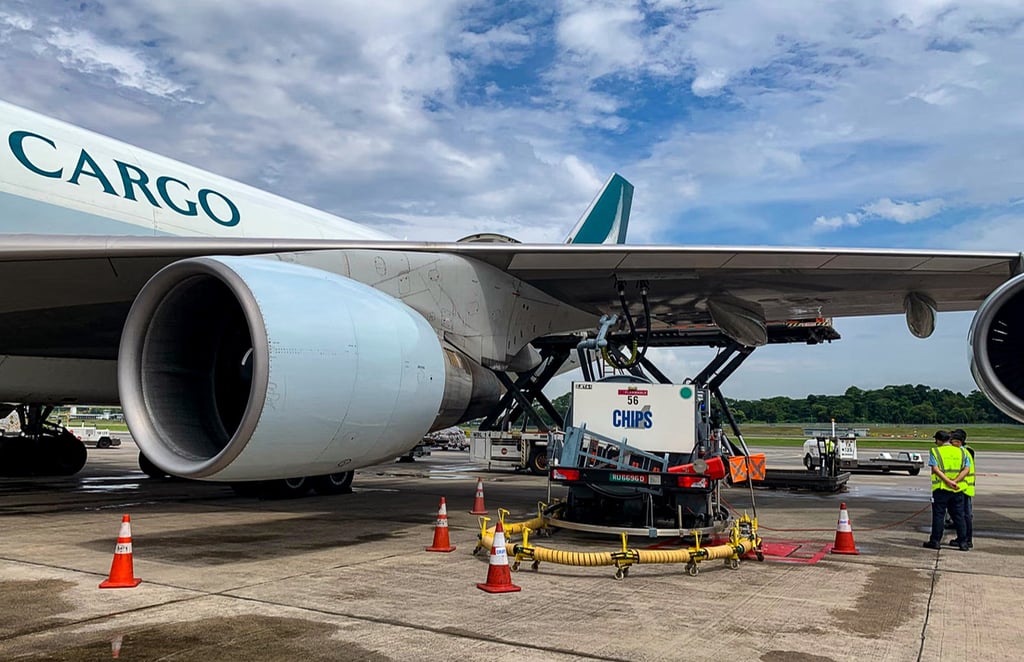Hong Kong flag carrier Cathay Pacific Airways has urged the government to come up with a plan to help local airlines make the switch to green fuel, including subsidies or logistics support, for moving towards carbon neutrality goals amid supply shortages.
Grace Cheung, the carrier’s general manager for sustainability, made the call on Thursday as Cathay adopted an “ambitious” goal of using sustainable aviation fuel (SAF) for 10 per cent of its total consumption by 2030, as part of its commitment to help the city achieve its goal of net-zero carbon emissions by 2050.
But the airline’s SAF usage was just 0.03 per cent by the end of last year because of the limited global supply, Cheung said. The government also lacked a road map for development of the eco-friendly jet fuel.
“The 10 per cent actually is a very ambitious target considering last year the actual usage was only 0.2 per cent globally. So everyone is working very hard and challenges remain. We need all the support we can get,” she said.
“I think what’s important is for the government to have that long-term view and a holistic approach for whatever policy, road map that they are coming up with.
“It’s not just for the next year or for 2030, but 2050 for the whole industry.”
Cheung said policy support could be in the form of subsidies or help with logistics or the supply chain for the green jet fuel.
“There could be lots of things and actually not just one solution is enough to solve the problem,” she said.
“There could be logistics or help for the supply chain … There may be subsidies or ways to bridge the price gap … What is important is a holistic plan of the government and taking a long-term view of the importance of that.”
Despite the current low intake of SAF, Cheung was confident the usage would rapidly increase upon approaching 2030 when global supply was expected to shoot up.
In his policy address last October, Chief Executive John Lee Ka-chiu tasked the Airport Authority of Hong Kong with formulating an action plan this year to promote SAF usage, coordinating the attainment of SAF sustainability standards certification and simplifying the approval process for SAF transport and storage.
Hong Kong’s 2050 target is 10 years earlier than China’s goal of 2060.
Although aviation accounted for just 2 per cent of global energy-related carbon dioxide emissions in 2022, the sector faces significant challenges in living up to its pledge of achieving net-zero carbon emissions by 2050, as agreed by 320 airlines, according to the Paris-based International Energy Agency.

Although SAF has the potential to reduce more than 80 per cent of life-cycle carbon emissions, it typically costs three to five times as much as traditional jet fuel because of its short supply, according to industry media outlet AvBuyer.
As Cathay’s current intake of the green fuel was low, Cheung said, there was not much impact on ticket prices. For the long term, she envisaged a rising supply of green jet fuel would bring down its cost and ticket prices.
“For long-term SAF development, apparently the production scale is so low and we do need to see the scale-up of the supply chain and we hope that the economy of scale will definitely bring the price down with continued technological development,” she said.
“But ultimately, in terms of government policies, how to scale up the development of the supply chain and how to make that work at the industry level is very important.”
The carrier currently sources its SAF from the United States, the world’s biggest supplier, Europe and mainland China due to availability and price competitiveness.
The Airport Authority is expected to submit a report in the third quarter for making recommendations to the government on the use and supply of SAF from different aspects such as policy support, facilitation measures or infrastructure improvements.
Under the law, green aviation fuels include biofuels produced from agricultural or forestry residues, algae, bio-waste, used cooking oil or certain animal fats, and recycled jet fuels produced from waste gases and waste plastic.
SAF includes synthetic fuels such as e-kerosene, produced by combining captured carbon dioxide with hydrogen made from water and renewable electricity.
It is considered the world’s first sustainable, zero-carbon alternative to traditional jet fuel.


